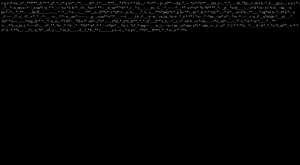
As stated in the first sentence of Rettburg in his chapter on Network Writing, he states that network writing is created for and published on the internet, and that the internet has vast potential for collaboration. The fact that most of society is literate on the web makes network writing a form of writing that is readily accessible and understood by web users everywhere.
Flarf poetry is a movement that places an emphasis on how language and technology collide to create works that express, as Rettburg puts it: “the arbitrary and idiosyncratic flood of texts that marked the adoption of the Internet in our lives”. The flarf work degenerative and regenerative is based on a webpage that loses a character of HTML markup each time the page is visited until there is nothing left of the markup. The fact that the page destructs at such a fast pace speaks to the idea that the internet is constantly browsed by individuals everywhere, and the results that arise over the course of the deconstruction of the page is interesting, to say the least.
Social media also provides various opportunities for network writing. Twitter is a platform that challenges writers to work around the constraints of a short word limit, all the while presenting the text in a format that strings together sets of text; an alteration from the typical reading experience that a traditional novel provided. Different social media platforms are frequented quite often by web users and as a result, works of Network Writing are easily accessible for reading and collaboration.